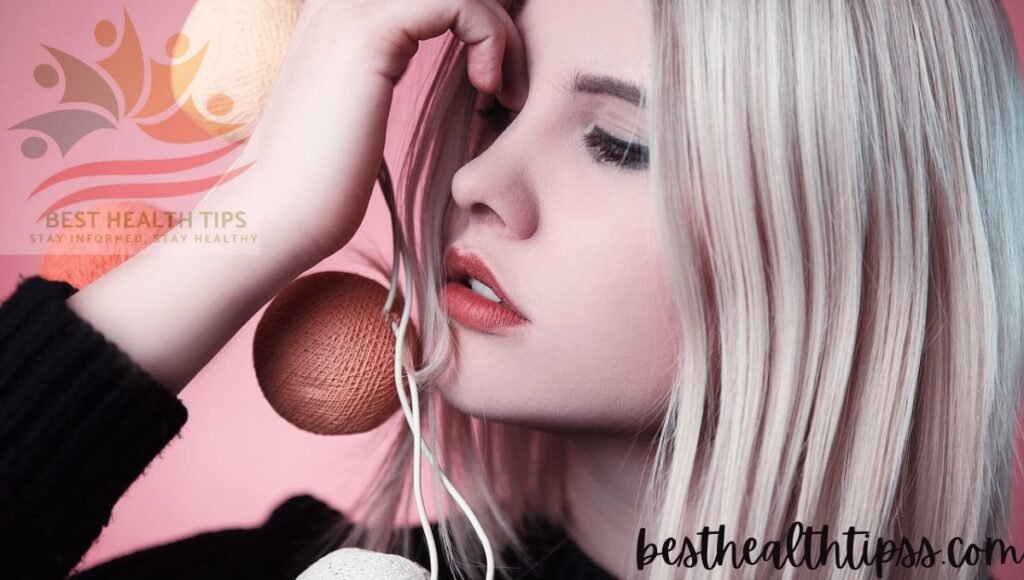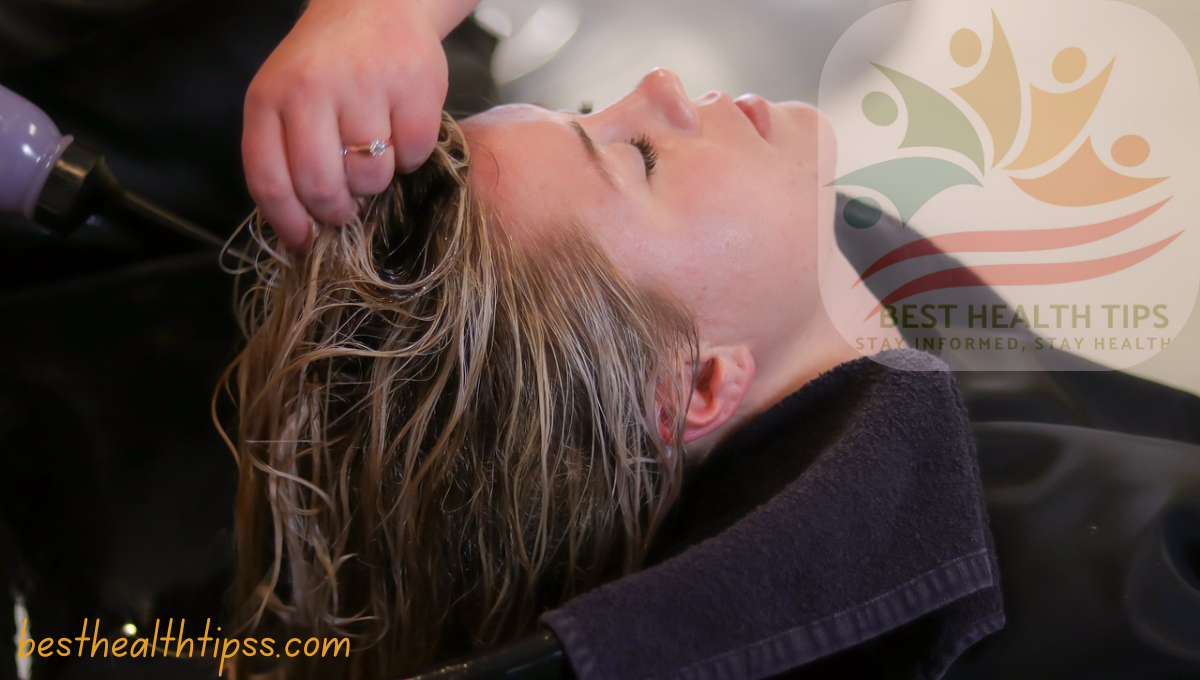Probably, every person who is caring for their hair is interested in knowing about the delicate balance of moisture and protein. One often relevant question arises. Can you wash out excess hair protein with shampoo?. Hair is mainly made of keratin that is, the protein that. In fact, has quite an important role for its sake, strength, and structure.
But the excessive use of protein restorative treatments for damaged. Hair mostly shows the other end of the problem far too much protein. Of course, protein is important to hair health. But it is only so fabulous when taken in small does. Any more than this and it is stiff and brittle, making the moisture in hair go down and making it pretty dry and unruly as well. Because of this, knowing if this excess protein could successfully be removed through shampooing has been very important in preserving hair in its very best shape.
In this study, we will be discussing the mechanisms of protein treatments, symptoms of protein overload, and the effectiveness of various shampoos in restoring the right balance in your hair care routine.
Introduction
The quest for healthy hair often leads to the quest for treatments: protein applications thought to fortify and restore. What is overlooked is the risk of protein overload, leading to stiff and lifeless hair. So, here’s the important question. Knowing that excess protein causes imbalances in moisture, this knowledge is quite important concerning protein treatments and hair health. In this discussion, we will delve into how shampoo can help with the issue of protein overload to bring life back to your hair.
Can you wash excess hair protein out with a shampoo?
This post looks into the working of proteins in hair care, signs of protein overdose, and do shampoos really remove the excess protein that exists in hair.
Balancing Hair and Protein

Hair is mainly constituted of a protein called keratin. This is the protein formed in the skin as well as the nails. This structural protein gives your hair strength and robustness. Moisture protein balance is the key to healthy hair. In case the hair had suffered environmental damage, heat styling, or chemical treatments, then it would lose some of its proteins. Most hair care products were made to put back some of that protein in orders to repair its integrity. Role of Protein Treatments Protein treatments are usually very rich in hydrolyzed proteins that can penetrate the hair shaft and temporarily repair the damaged areas. They benefit people with weak, brittle, or highly processed hair. On the other hand, too much protein treatment will lead to an excess amount of proteins within the hair that feels stiff, dry, and dead.
Signs of Protein Build Up
This is how you know that you had a protein overdose on your hair. Common signs include the following:
1. Frizz
Hair is likely to get very knotty and frizzy once it’s over-treated in protein.
2. Stiffness
This is often defined as when one’s hair becomes crunchy instead of soft and rigid. The hair tends to break easily, characterized by a lot of split ends, meaning it was a protein overdose. Lack of moisture and hair lack elasticity even after regular conditioning.
3. General dullness
Your hair may also lack the luster you’re seeking from a hairstyle, mainly due to the excess level of protein. It does depend on several things, though. Sure, the shampoo will always wash off a lot of the superfluous coating of protein which is out there surrounding your hair but success cannot be guaranteed indeed is far from it, as it comes down to the individual result of multiple different factors.
4. Sulfate Free Shampoos
These are gentler and less stripping, but they will not necessarily remove excess protein if that is what you are trying to achieve. If you choose a sulfate-free shampoo, try to find one with added moisturizing ingredients to help keep hair healthy.
5. Moisturizing Shampoos

Moisturizing shampoos place more emphasis on moisturizing the hair but remove less protein. If too much protein is added, this requires clarification.
6. Method of Washing Use warm water
Hot water helps to do deeper cleansing so that the shampoo can penetrate deeper into the scalp and may break the stored excess protein.
7. Shampoo Directly on Dry Hair
Before wetting, apply a small amount of clarifying shampoo directly to your dry hair. This can break down and lift excess proteins you rinse off. It is good to be thorough in the rinsing process after shampooing. All residues left behind may make matters worse due to building up.
How often to wash
The thing comes into mind that one really wants their protein treatments which may bring over washing, thus drying and then disrupting the whole system over again. For someone suffering from excess protein, general washing is a problem through which proper balancing of that schedule so that it never overdoes its job be made. How to remove excess proteins if you believe your hair has taken too much protein, worry not.
As the following steps will help calm it down:
Select a correct shampoo
You will need a clarifying shampoo that breaks open the buildup and clean off. The best shampoos to use are specially formulated as deep-cleaning ones. Start with the clarifying shampoo on dry hair and massage it in well into the scalp and hair lengths where you feel you most feel the protein build up is.
Rinse hair well with warm water.

Repeat if necessary to remove all excess proteins. Condition Follow through with a conditioner. Apply good moisturizing conditioner once shampooed to reverse dehydration from clarifying shampoo. This counteracts the drying effects some of those drying agents cause.
Hair Hears
You No one has similar hair. All hair is different; every hair has a life and hears everything. Pay attention to the timing when hair seems to act well with any product that is applied and either alters the application of these products or the frequency based on that. The more promptly you realize that it has been invaded by proteins, the more promptly you will be to reduce the frequency at which it is utilizing the protein treatment.
Check on the hair
Watch how it does after applying this treatment. If positive changes begin to happen, then an adjustment can be made into the future when you will want to again do your protein treatments. Before the styling treatment, ask your hair about its health so that you will come to know that it is either strong or weak.Inspect your hairs for split ends or dryness as the earliest you detect the problem, the better to avoid secondary damage.
Balanced Moisture with Protein
- Content preclusion is better than cure. The consequent are some tips for achieve healthy stability between humidity and protein in your hair.
Restrict Protein treatments
- If your hair responds well to protein treatments, limit them to once in a few weeks instead of once a week.
Hydration
- Included the hair care routine needs to include hydrating products in order not to become too.
Humectants Balance
The agents that can attract moisture back to hair are glycerin, honey, and aloe Vera and would restore balance after protein treatments. Dry. Look out for hydrating shampoos, conditioners and leave in treatments.
Here is a summary of the main information that serves as an answer to your question
| Aspect | Details |
| Aspect Times | Definition of Protein Overload A condition whereby hair contains too much protein; it becomes stiff, brittle, and lacks moisture. Signs of Protein Overload It tends to be stiff and crunchy Breakage increased Lack of moisture and elasticity |
| Clarifying shampoos: | very nice for deep cleansing would effortlessly remove excess protein on hair |
| Sulfate free shampoos | It does not remove protein on your hair, but fantastic with keeping it moist. Moisturizing shampoo. It keeps it moist and would keep your hair wonderful and feeling good. So it’s not one the best for removing some sort of protein from hair if you’re trying that sort of thing. |
| Prevention Tips | Cut the overload; do not overdo with protein treatments Moisturize now and then Listen to what your hair is telling you; if it protests at the slightest little thing, it’s already telling you to change. |
Summary
If you really do not know what’s going on with your hair or how to handle your hair. Seek out the advice of a skilled stylist or trichology’s for more explicit advice. In little, there is the removal of overload hair protein with a shampoo, but the success would depend on the type of shampoo and how it was washed. The best solution would be clarifying shampoos for removing excess protein. But moisturizing products should be applied afterward. Being aware of all these signs and taking action on time will ensure you keep your hair in the healthy state. Do remember that just the right amount of protein works like a magic. And finding out what balance works for you and your hair is essential.
Read more Article of Beauty & skincare and other Categories of Besthealthtipss.


